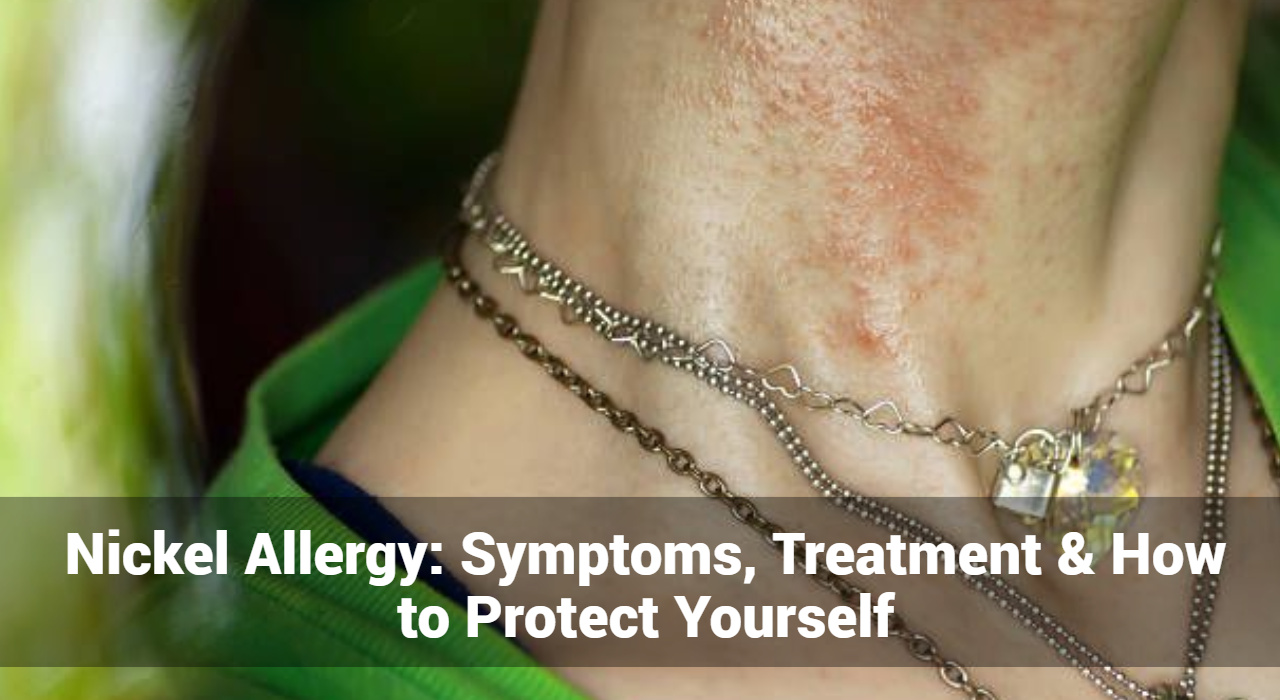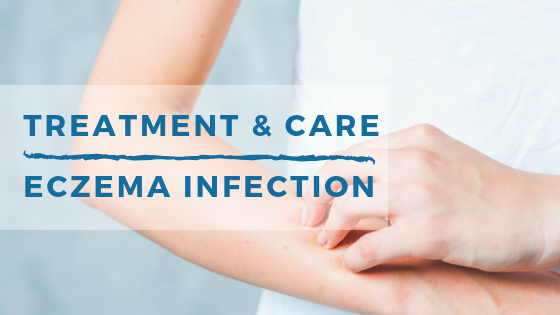Nickel allergy is a common cause of allergic contact dermatitis, affecting millions of people worldwide. Understanding its symptoms, effective treatments, and preventive measures can significantly improve the quality of life for those affected. This comprehensive guide will delve into everything you need to know about nickel allergy.
What is Nickel Allergy?
Nickel allergy is a hypersensitivity reaction of the immune system to nickel, a metal found in many everyday items. When someone with a nickel allergy comes into contact with nickel-containing objects, their skin may react with an itchy rash, known as allergic contact dermatitis.
What Causes of Nickel Allergy?
Nickel allergy is an immune system response to nickel, a metal commonly found in various everyday items. The exact cause of the allergy involves several factors:
- Genetic Predisposition: A family history of allergies, including nickel allergy, can increase the likelihood of developing the condition. Genetics plays a role in how the immune system reacts to allergens.
- Prolonged Exposure: Continuous or repeated exposure to nickel can sensitize the immune system, leading to an allergic reaction. This is often seen in individuals who frequently wear nickel-containing jewelry or use nickel-coated objects.
- Body Piercings and Jewelry: Nickel is a common component in costume jewelry, earrings, necklaces, and other accessories. Direct and prolonged contact with nickel-containing jewelry, especially through body piercings, can trigger an allergic reaction.
- Occupational Exposure: Certain professions, such as construction, hairdressing, and metalworking, involve regular contact with nickel-containing tools and materials. Prolonged occupational exposure can increase the risk of developing a nickel allergy.
- Environmental Factors: Nickel is present in various environmental sources, including soil, water, and air. Although less common, exposure to nickel through environmental factors can contribute to sensitization.
Track and Manage your Eczema treatment using a comprehensive Eczema App
Download Eczemaless now
What Are The Common Symptoms of Nickel Allergy?
Nickel allergy symptoms typically manifest within 12 to 48 hours after contact with nickel-containing items. The severity and location of symptoms can vary based on the extent of exposure and individual sensitivity. Common symptoms include:
- Itchy Rash: One of the hallmark symptoms of nickel allergy is an itchy rash, known as allergic contact dermatitis. The rash often appears as red, raised bumps on the skin.
- Blisters: In more severe cases, the rash may develop into fluid-filled blisters. These blisters can be painful and may ooze or crust over.
- Dry, Scaly Skin: Prolonged exposure to nickel can lead to chronic dry, scaly patches of skin. The affected areas may become rough and cracked.
- Swelling: The skin around the area of contact with nickel may become swollen and tender.
- Burning Sensation: Some individuals experience a burning or stinging sensation on the skin where the nickel made contact.
- Eczema: Chronic exposure to nickel can lead to eczema (atopic dermatitis), a more severe form of dermatitis characterized by persistent inflammation, itching, and thickened skin.
- Localized Reaction: Symptoms typically occur at the site of contact with nickel-containing items. Common areas affected include earlobes (from earrings), wrists (from watches or bracelets), neck (from necklaces), and waist (from belt buckles).
- Systemic Reaction: In rare cases, individuals with severe nickel allergy may experience a systemic reaction, with symptoms spreading beyond the initial contact area. This can include widespread itching, hives, and generalized skin inflammation.
Common Sources of Nickel
Nickel can be found in a variety of everyday items, including:
- Jewelry (earrings, rings, necklaces)
- Watches and watchbands
- Eyeglass frames
- Coins
- Zippers, buttons, and belt buckles
- Cell phones and electronic devices
- Keys and keychains
- Kitchen utensils and tools
What Do Doctors Diagnose Of Nickel Allergy?
Diagnosing a nickel allergy involves a combination of medical history assessment, physical examination, and specialized testing. Here’s how dermatologists typically diagnose nickel allergy:
1. Medical History
- Symptom History: The doctor will ask about your symptoms, including when they started, their severity, and any patterns you’ve noticed.
- Exposure History: You’ll be asked about your exposure to potential sources of nickel, such as jewelry, clothing fasteners, electronic devices, and occupational exposure.
- Personal and Family History: Information about your personal and family history of allergies or skin conditions will be gathered.
2. Physical Examination
- Visual Inspection: The doctor will examine the affected areas of your skin for signs of allergic contact dermatitis, such as redness, itching, blisters, and dry, scaly patches.
- Pattern Recognition: The doctor will look for characteristic patterns of the rash that are typical of nickel allergy, such as localized reactions at sites of contact with nickel-containing items.
GET IN CONTROL OF YOUR ECZEMA
Use our AI tool to check the severity of Eczema and keep track of your Eczema progress.
3. Patch Testing
Patch testing is the most reliable method for diagnosing nickel allergy. It involves the following steps:
- Application of Test Patches: Small amounts of nickel sulfate and other potential allergens are applied to patches, which are then placed on your skin (usually on the back).
- Observation Period: The patches remain on your skin for 48 hours. You must avoid getting the test area wet during this time.
- Initial Reading: After 48 hours, the patches are removed, and the doctor examines the skin for any reactions.
- Final Reading: A follow-up examination is conducted 48-96 hours after the patches are removed to check for delayed reactions.
4. Interpretation of Results
- Positive Reaction: A positive patch test result for nickel will show localized redness, swelling, and possibly small blisters at the test site, indicating an allergic reaction.
- Negative Reaction: If there is no reaction at the test site, it suggests that you do not have a nickel allergy.
5. Differential Diagnosis
The doctor may consider other conditions that can cause similar symptoms, such as:
- Irritant Contact Dermatitis: Caused by direct damage to the skin from irritants.
- Atopic Dermatitis (Eczema): A chronic skin condition characterized by dry, itchy, and inflamed skin.
- Other Allergic Reactions: Allergies to other metals or substances.
Treatment Options for Nickel Allergy
While there is no cure for nickel allergy, treatments can help manage symptoms and reduce discomfort. These include:
- Topical Corticosteroids: These creams or ointments reduce inflammation and itching.
- Oral Antihistamines: Medications like diphenhydramine can help alleviate itching and swelling.
- Moisturizers: Keeping the skin hydrated with hypoallergenic moisturizers can prevent dryness and irritation.
- Cool Compresses: Applying cool, damp cloths to the affected areas can soothe itching and reduce inflammation.
- Avoiding Nickel Exposure: The most effective way to manage nickel allergy is to avoid contact with nickel-containing items.
How to Protect Yourself from Nickel Allergy?
Nickel allergy can be challenging to manage due to the prevalence of nickel in everyday items. However, with some proactive measures, you can significantly reduce your risk of exposure and manage your symptoms effectively. Here’s how to protect yourself from nickel allergy:
- Choose Nickel-Free Jewelry: Opt for jewelry made from stainless steel, titanium, platinum, or gold (at least 14 karats).
- Use Protective Barriers: Apply clear nail polish or a nickel barrier cream to items that may contain nickel.
- Wear Protective Clothing: Cover areas of skin that may come into contact with nickel, such as wearing long sleeves to avoid contact with watchbands or belt buckles.
- Switch to Plastic or Wooden Items: Replace metal zippers, buttons, and tools with plastic or wooden alternatives.
- Be Mindful of Electronics: Use phone cases and covers to minimize direct contact with nickel-containing electronic devices.
- Check Product Labels: Look for items labeled “nickel-free” or “hypoallergenic” when purchasing personal items.
Living with Nickel Allergy
Living with a nickel allergy requires vigilance and proactive management. Here are some additional tips to help you navigate daily life:
- Educate Yourself: Learn about the sources of nickel and how to avoid them.
- Create a Safe Environment: Identify and remove nickel-containing items from your home and workplace.
- Communicate Your Allergy: Inform friends, family, and colleagues about your allergy to ensure they understand your needs and can help you avoid exposure.
- Carry Allergy Supplies: Keep antihistamines, corticosteroid creams, and other essential items with you for quick relief in case of accidental exposure.
- Regular Dermatologist Visits: Schedule regular check-ups with your dermatologist to monitor your condition and adjust treatment as needed.
Conclusion
Nickel allergy can be a challenging skin condition to manage, but with the right knowledge and precautions, you can significantly reduce your risk of exposure and minimize symptoms. By understanding the causes, recognizing the symptoms, and implementing effective treatments and preventive measures, you can lead a comfortable and healthy life despite your nickel allergy.
Track and Manage your Eczema treatment using a comprehensive Eczema App
Download Eczemaless now



